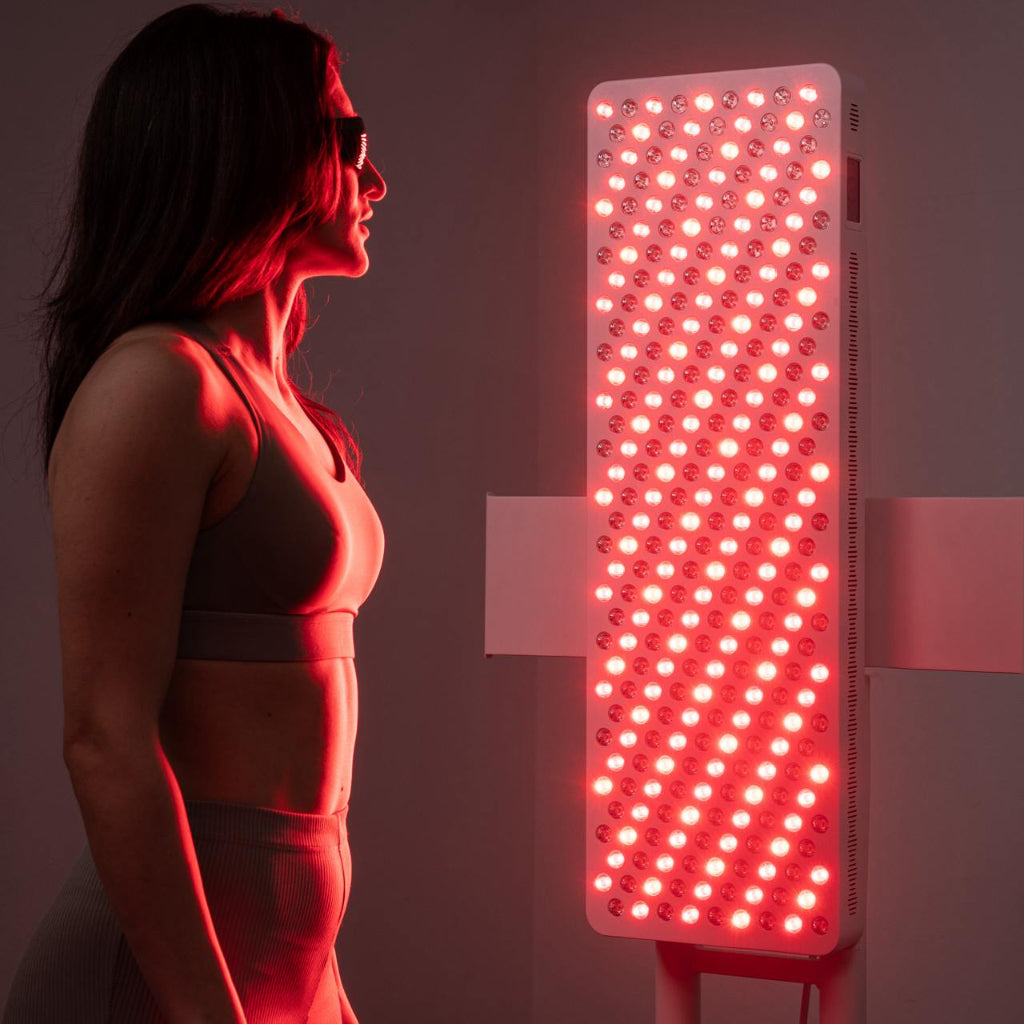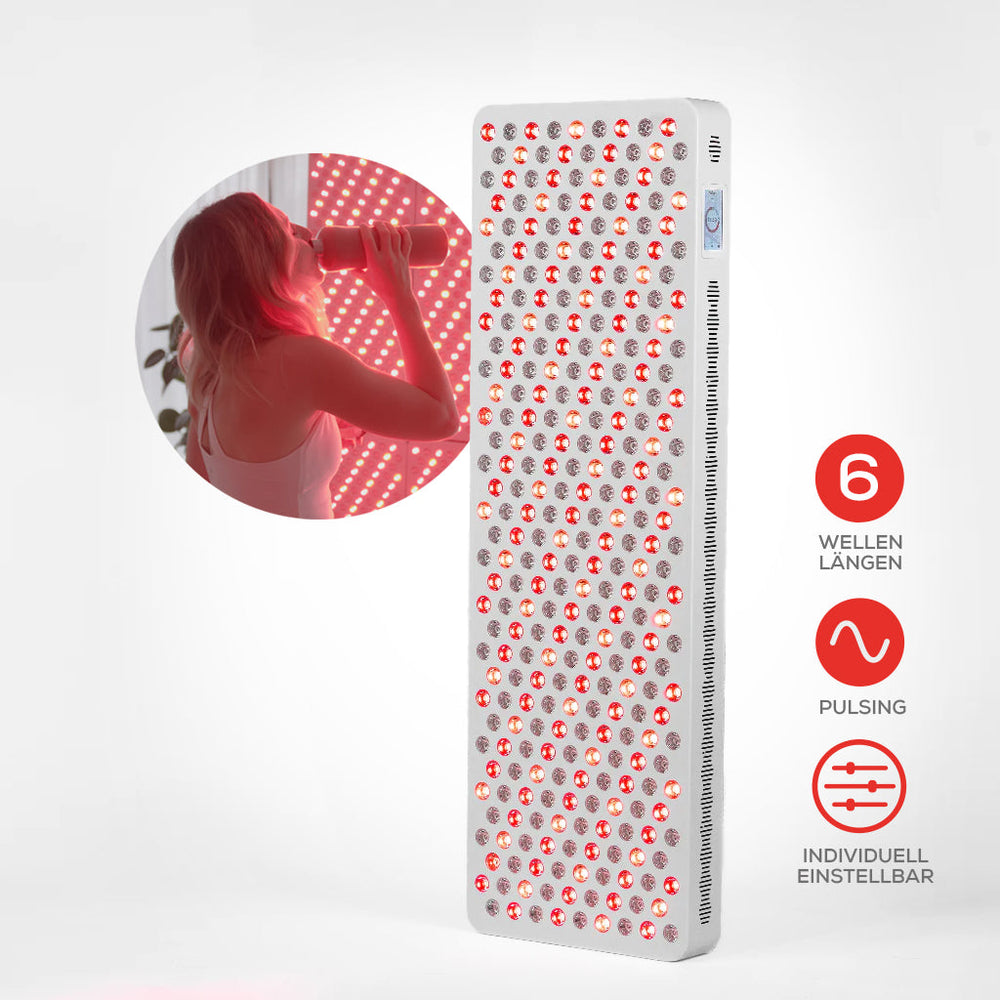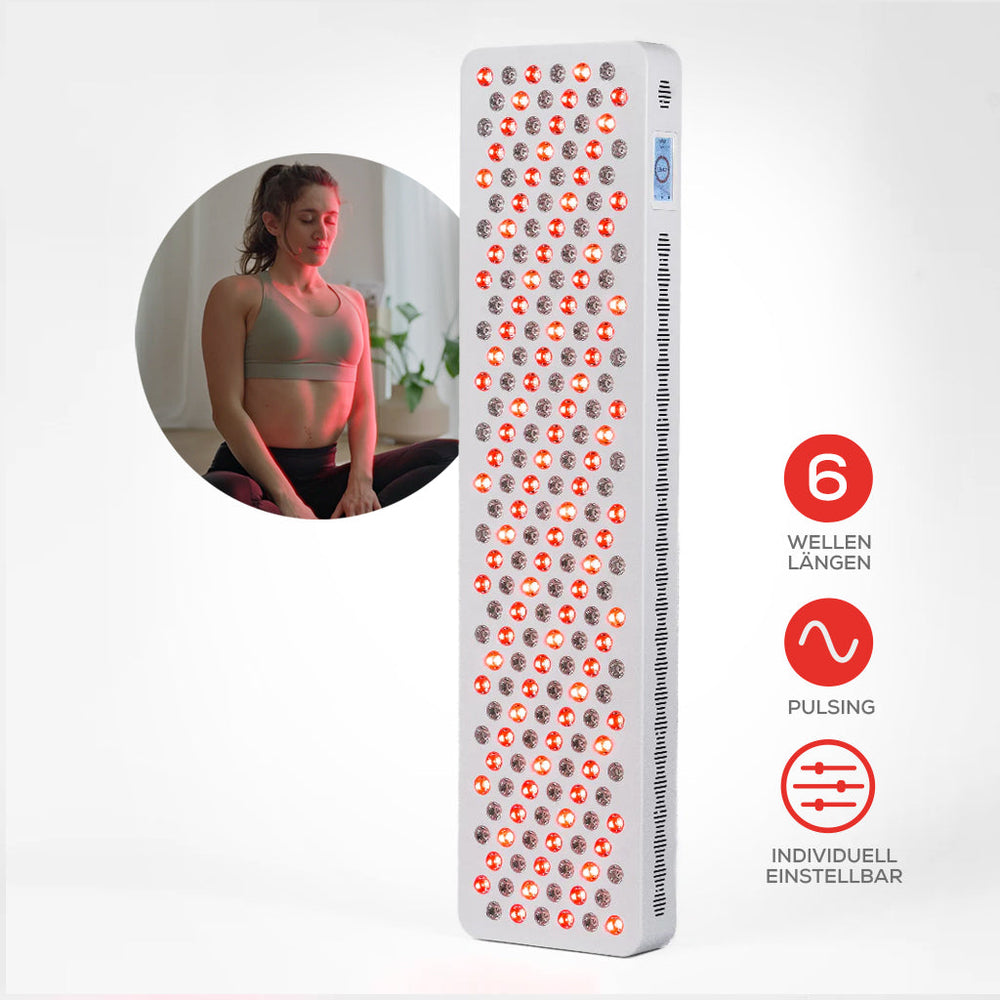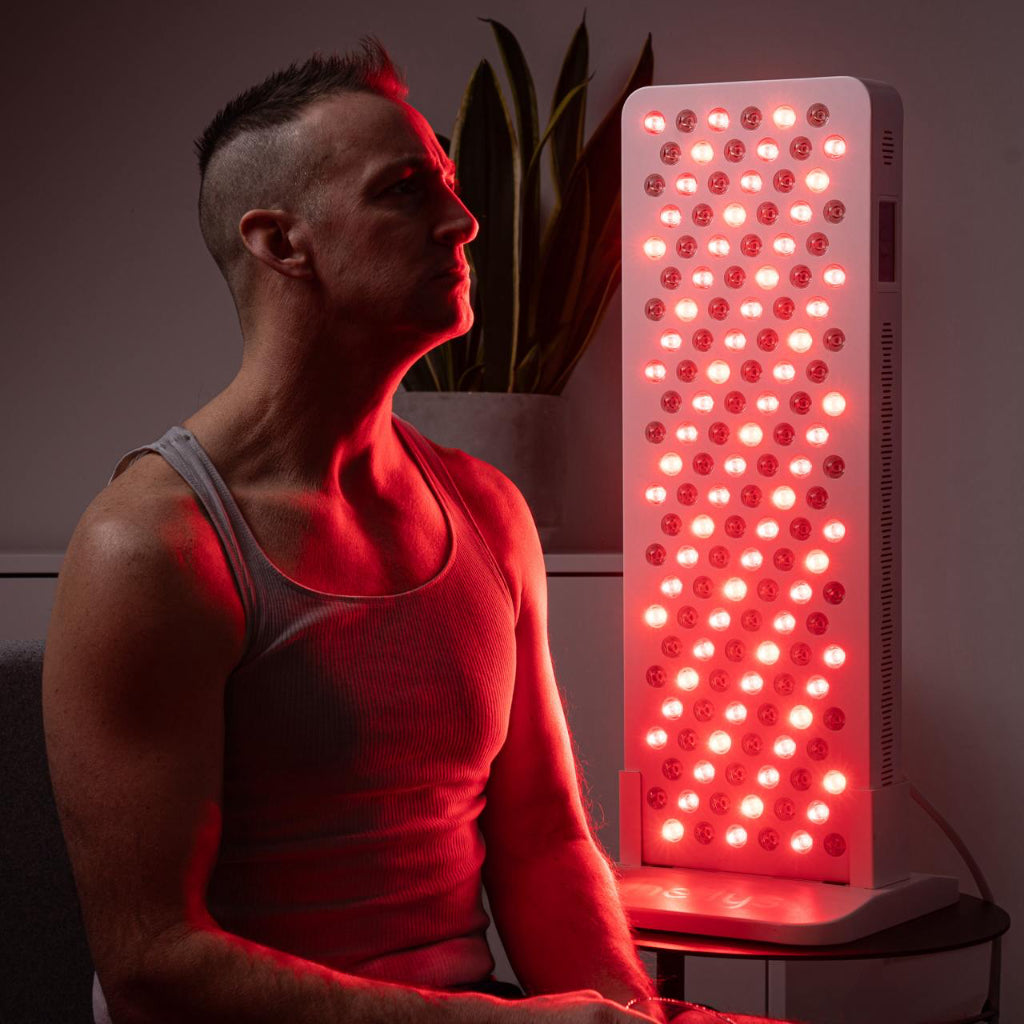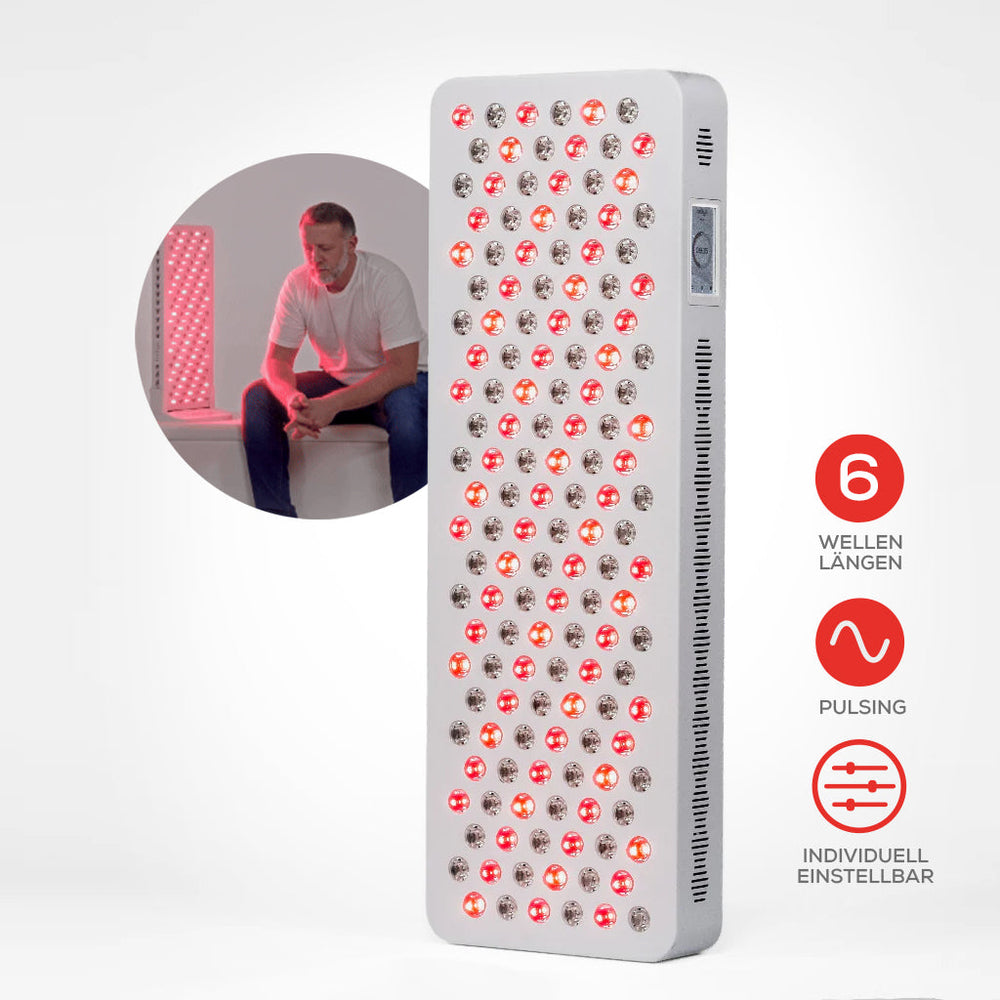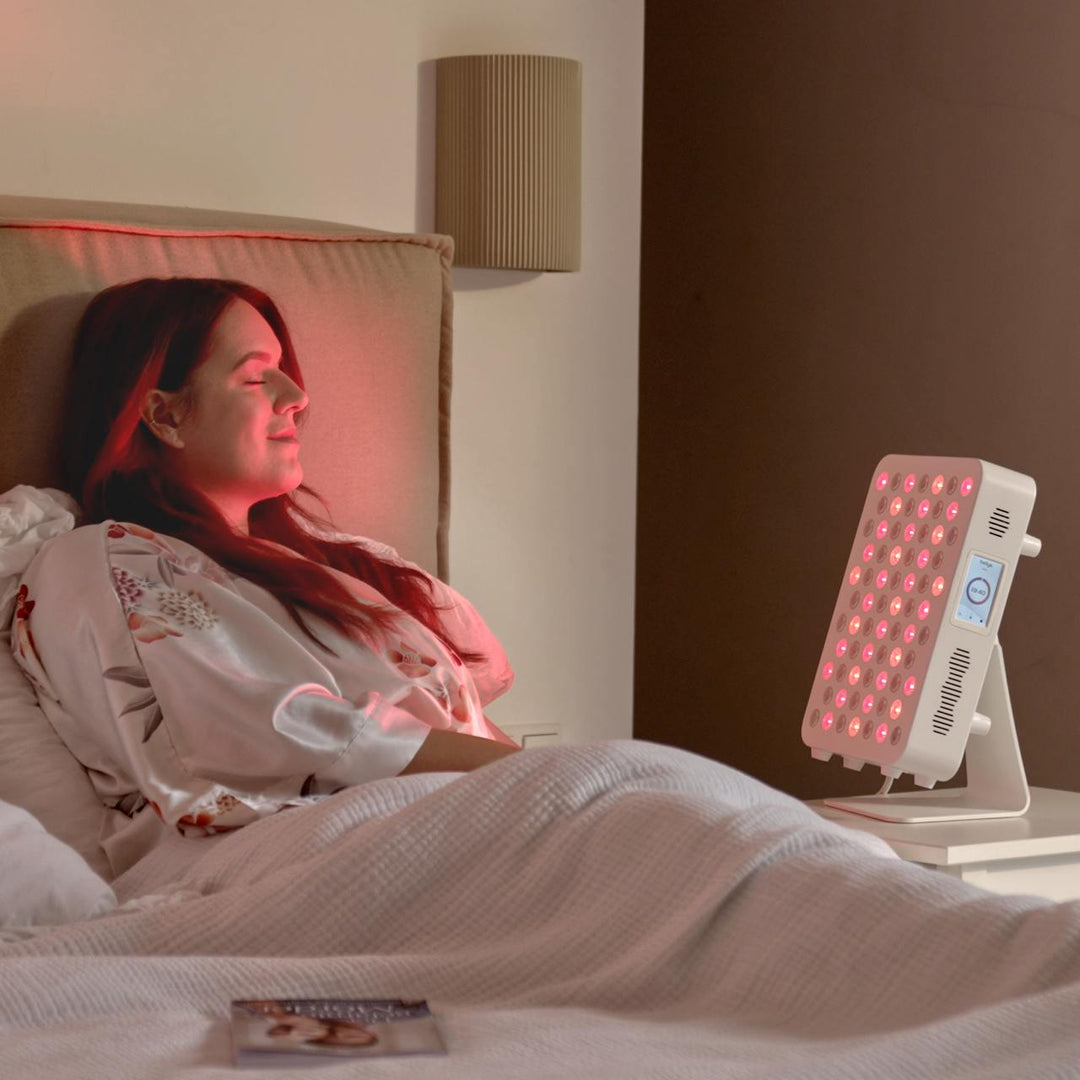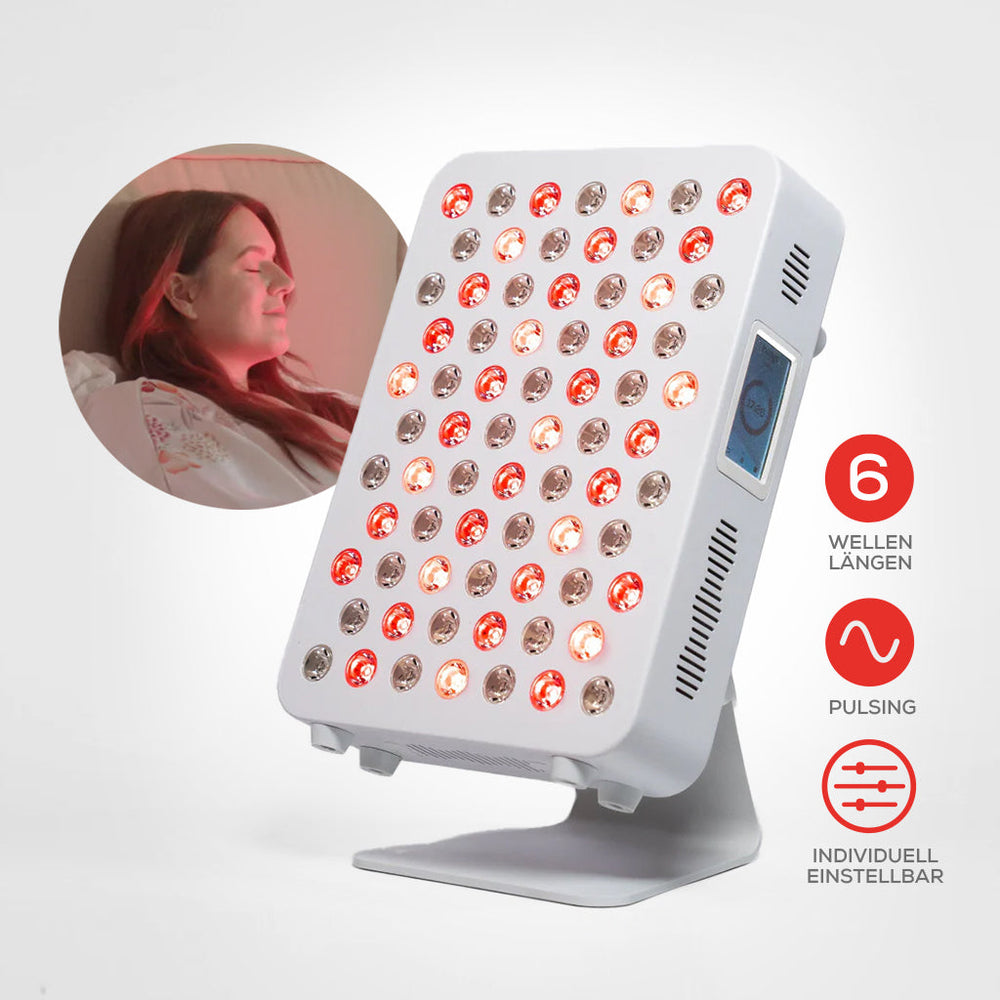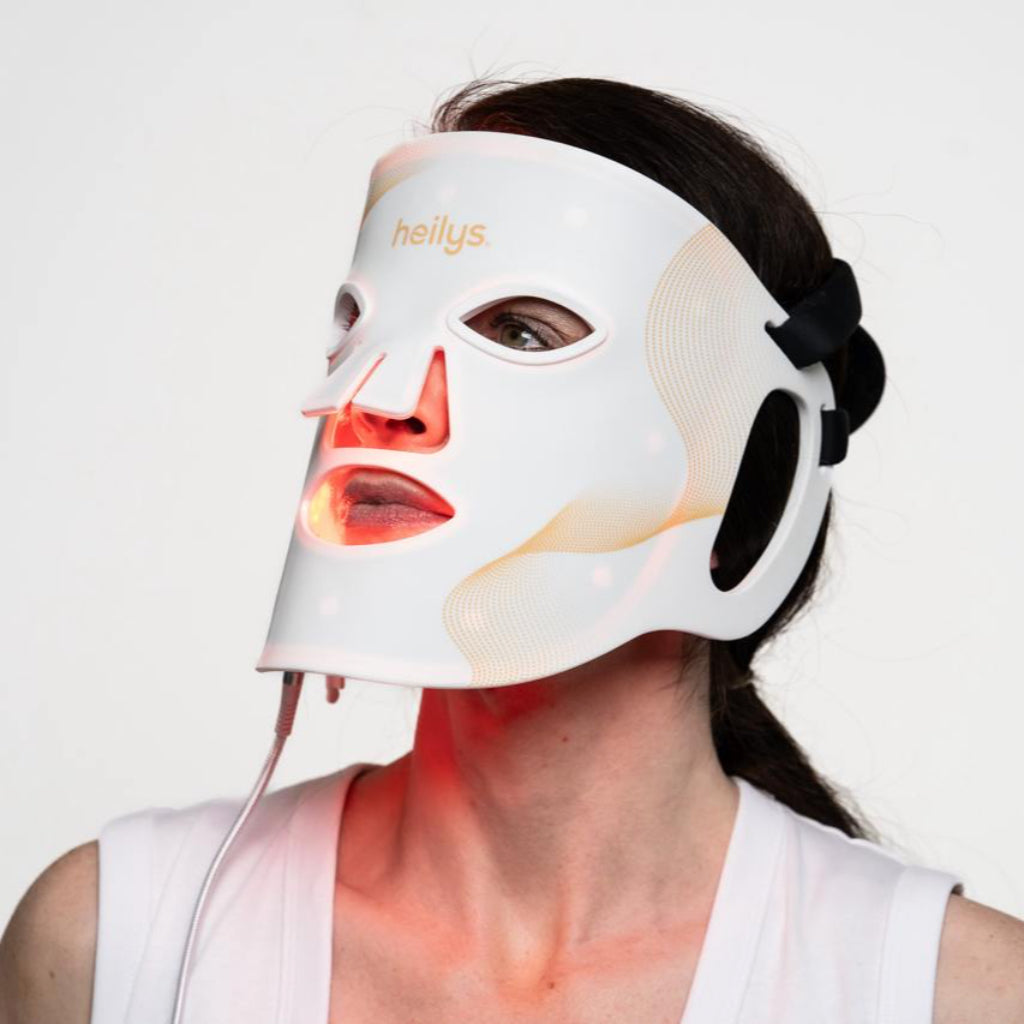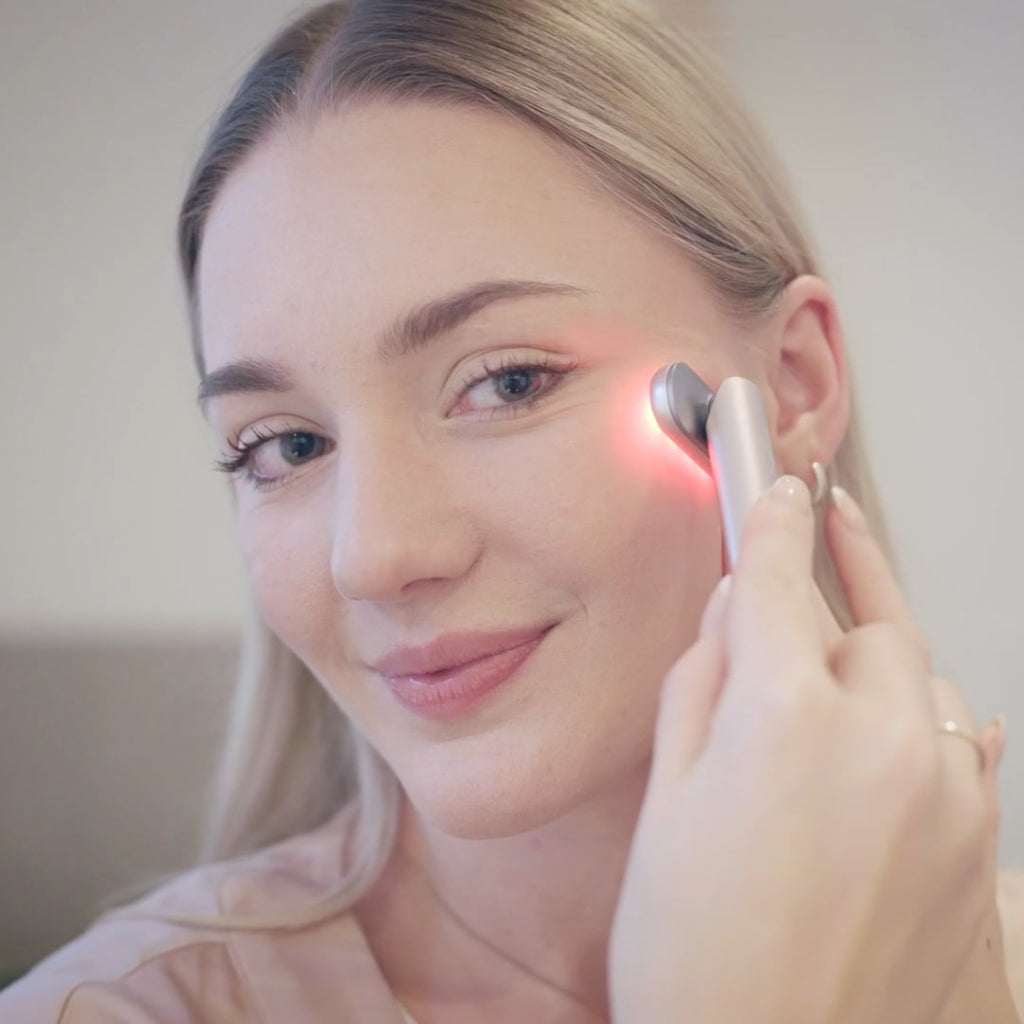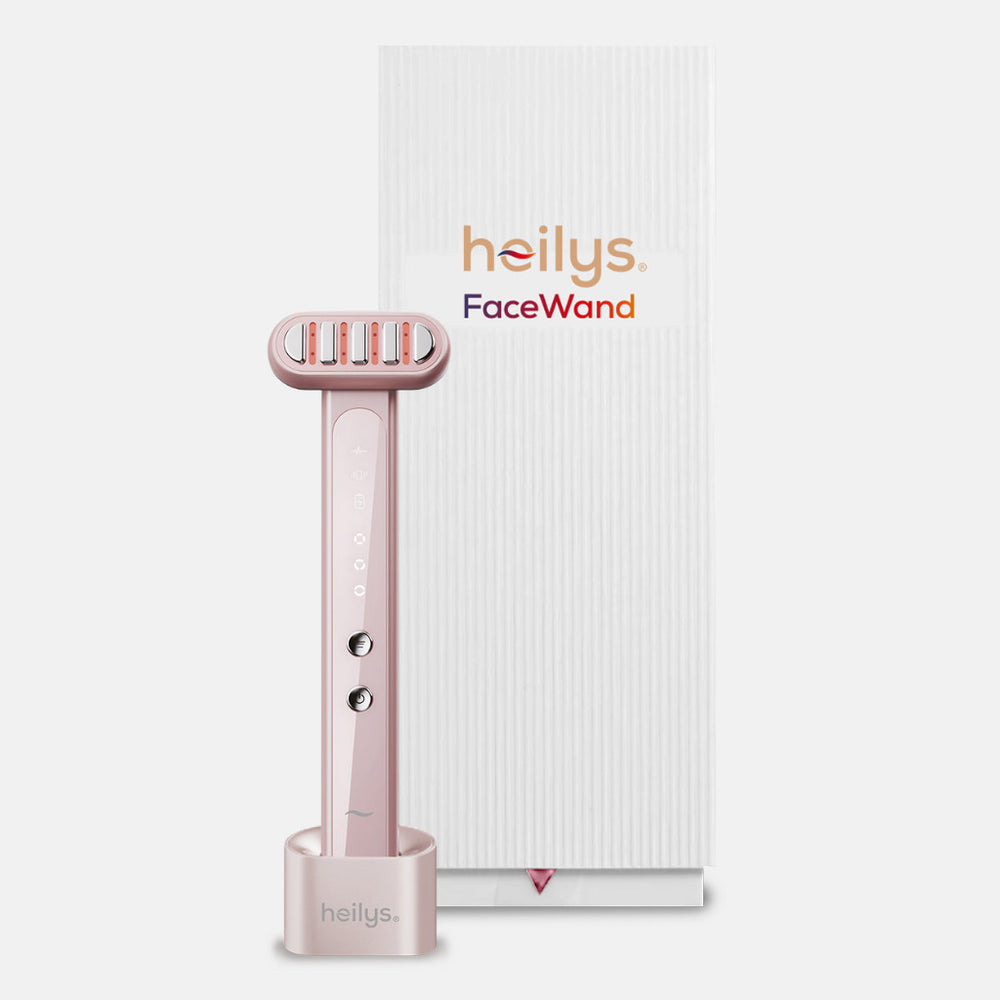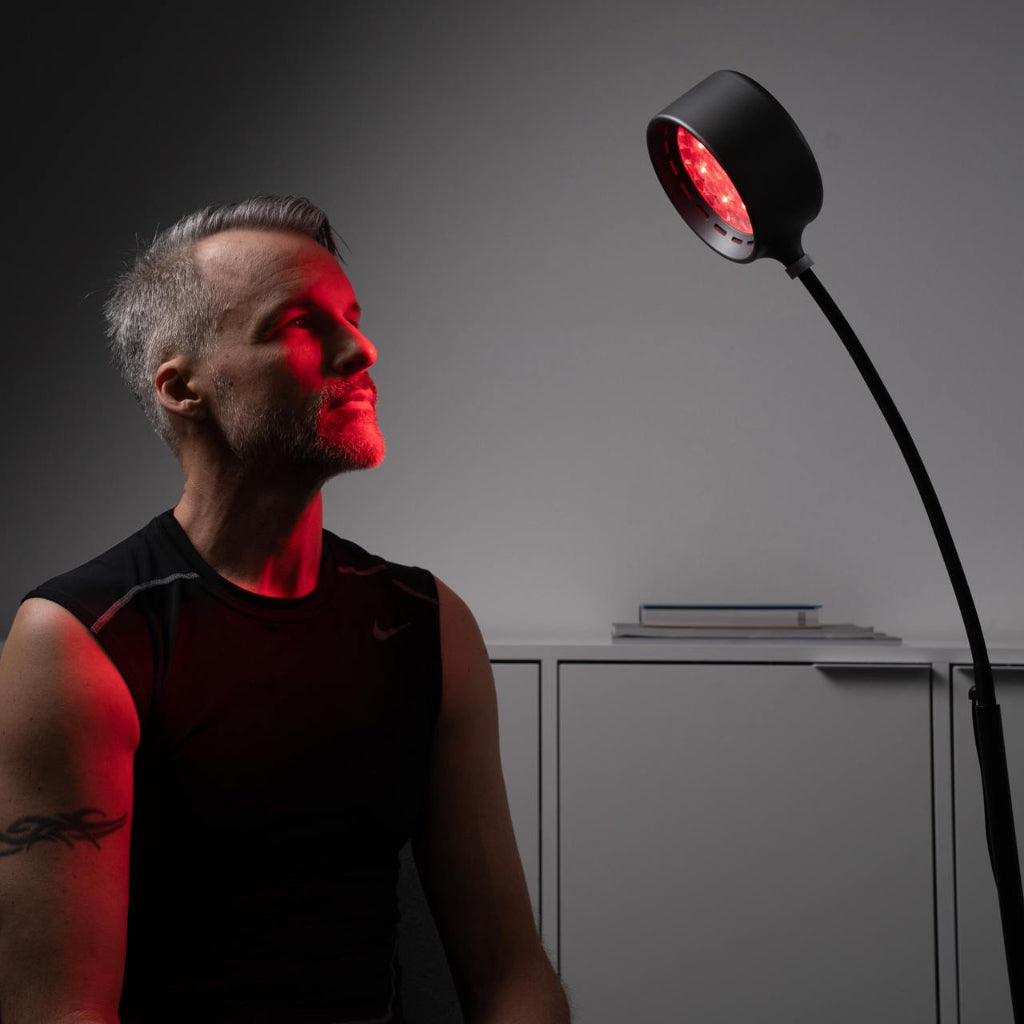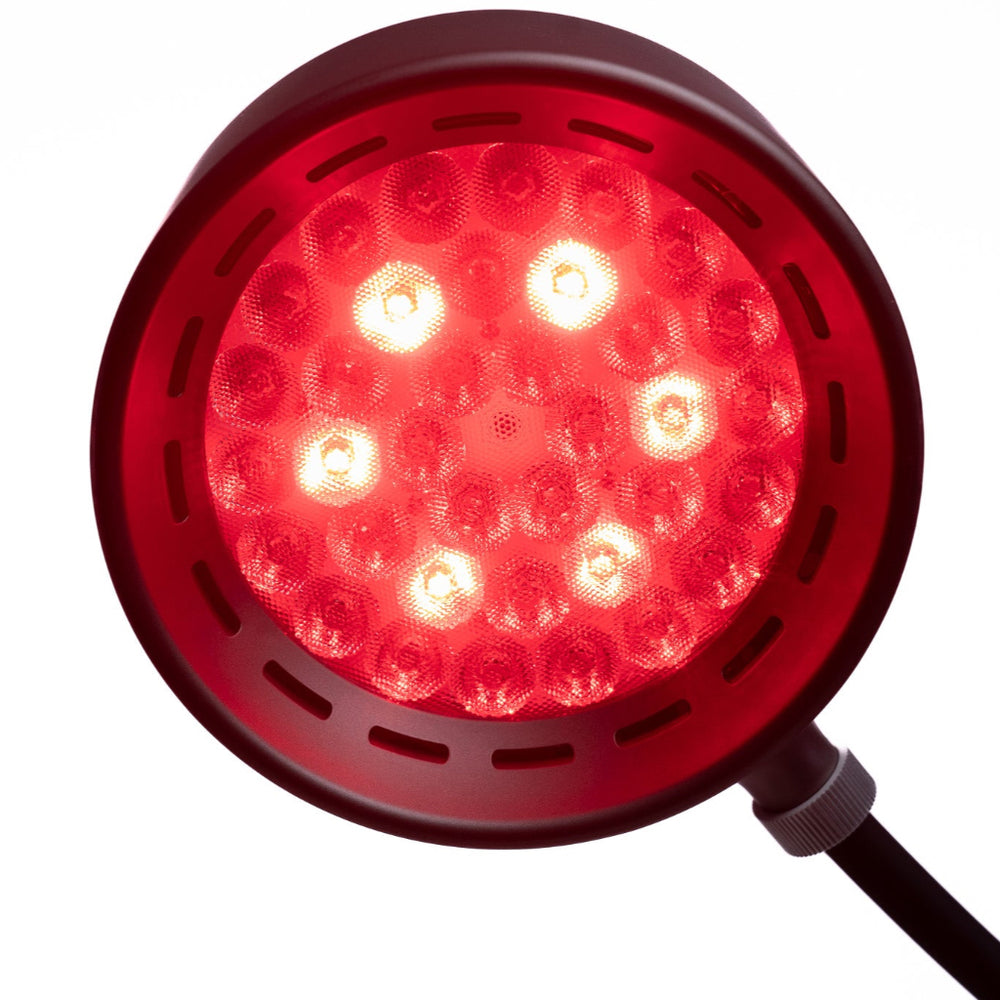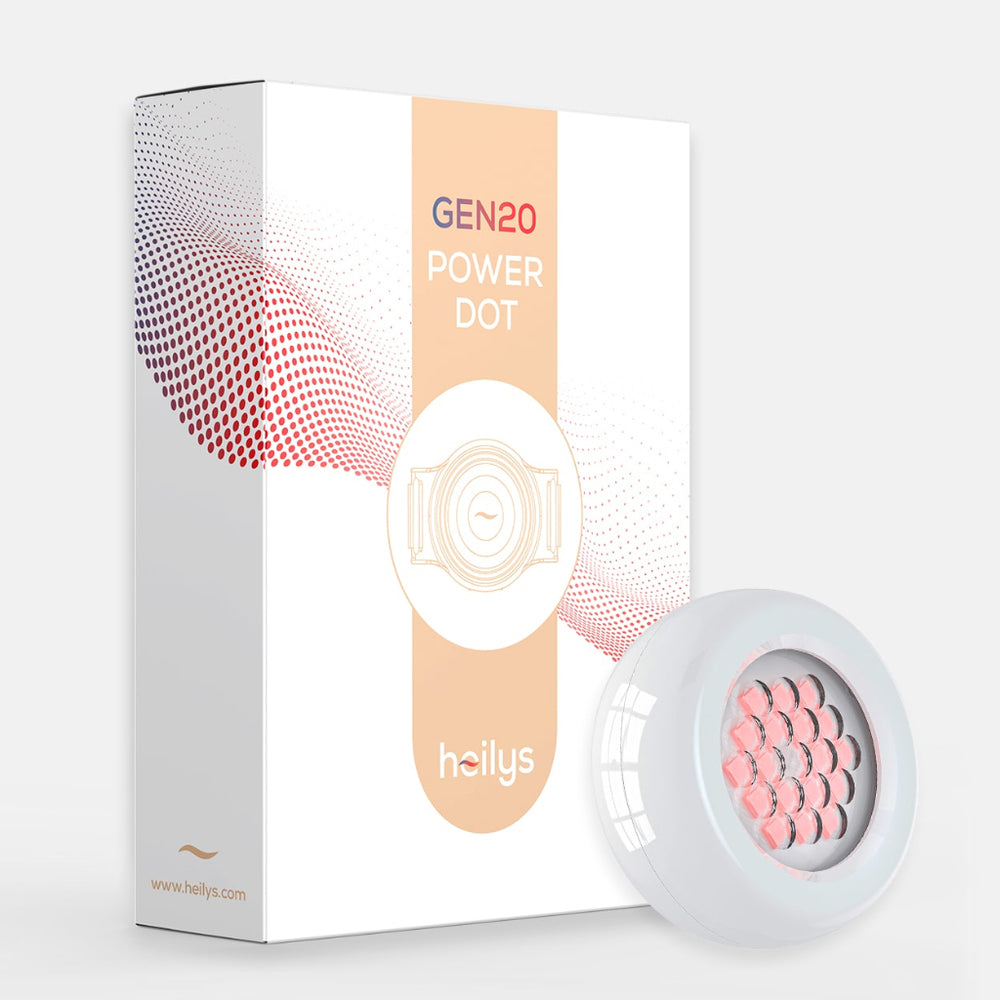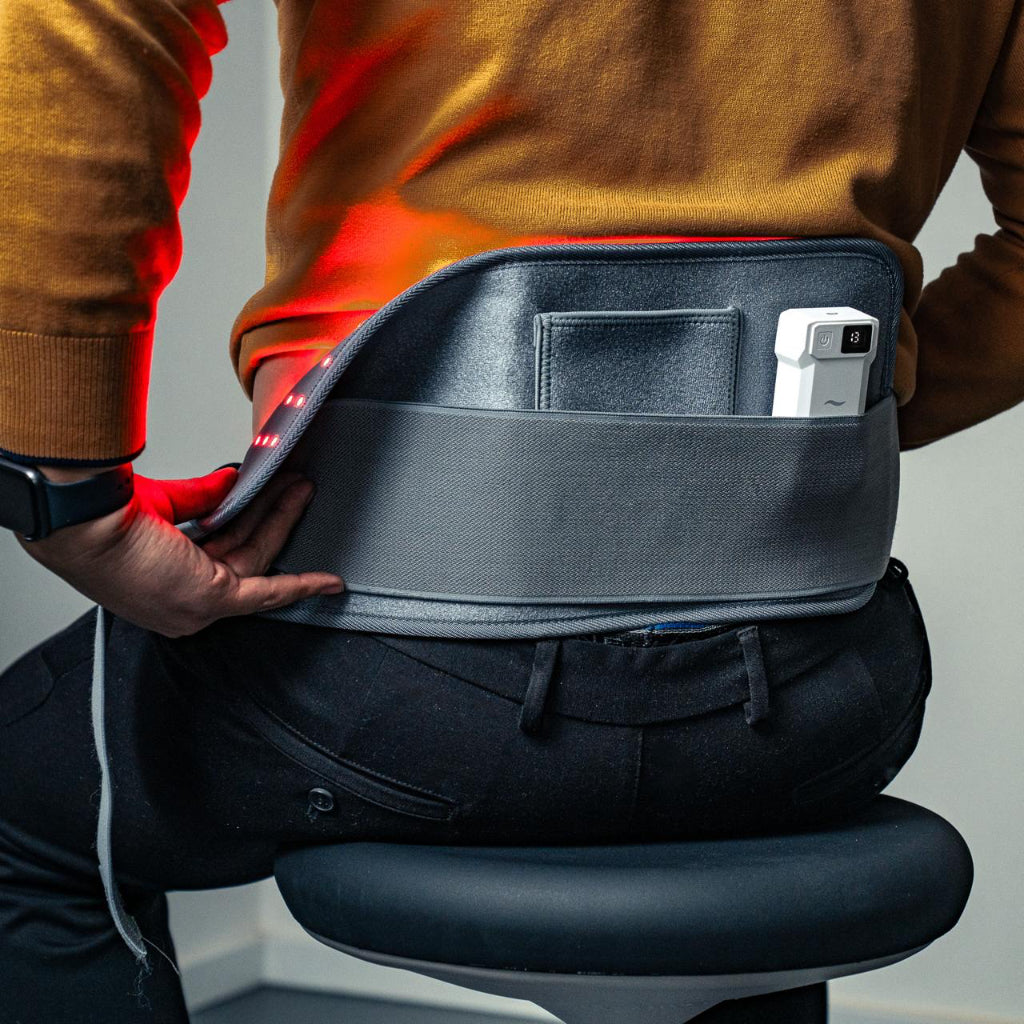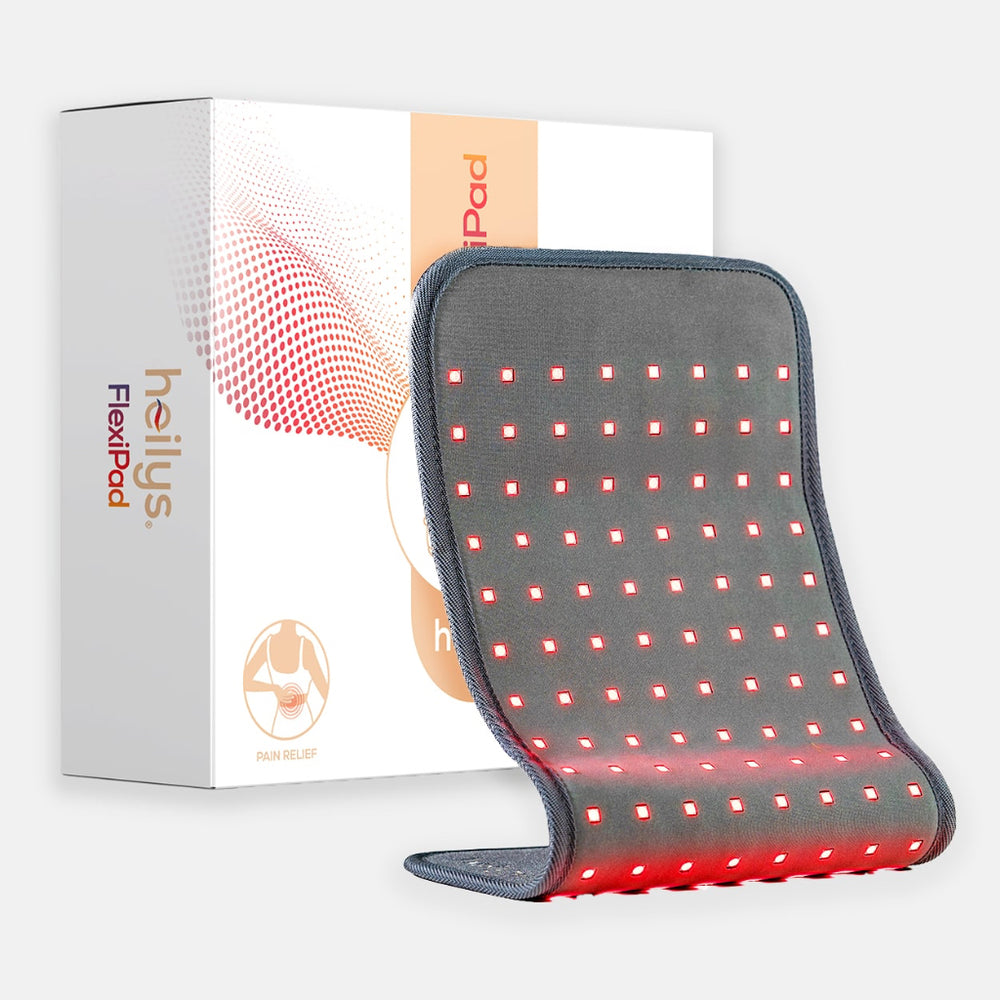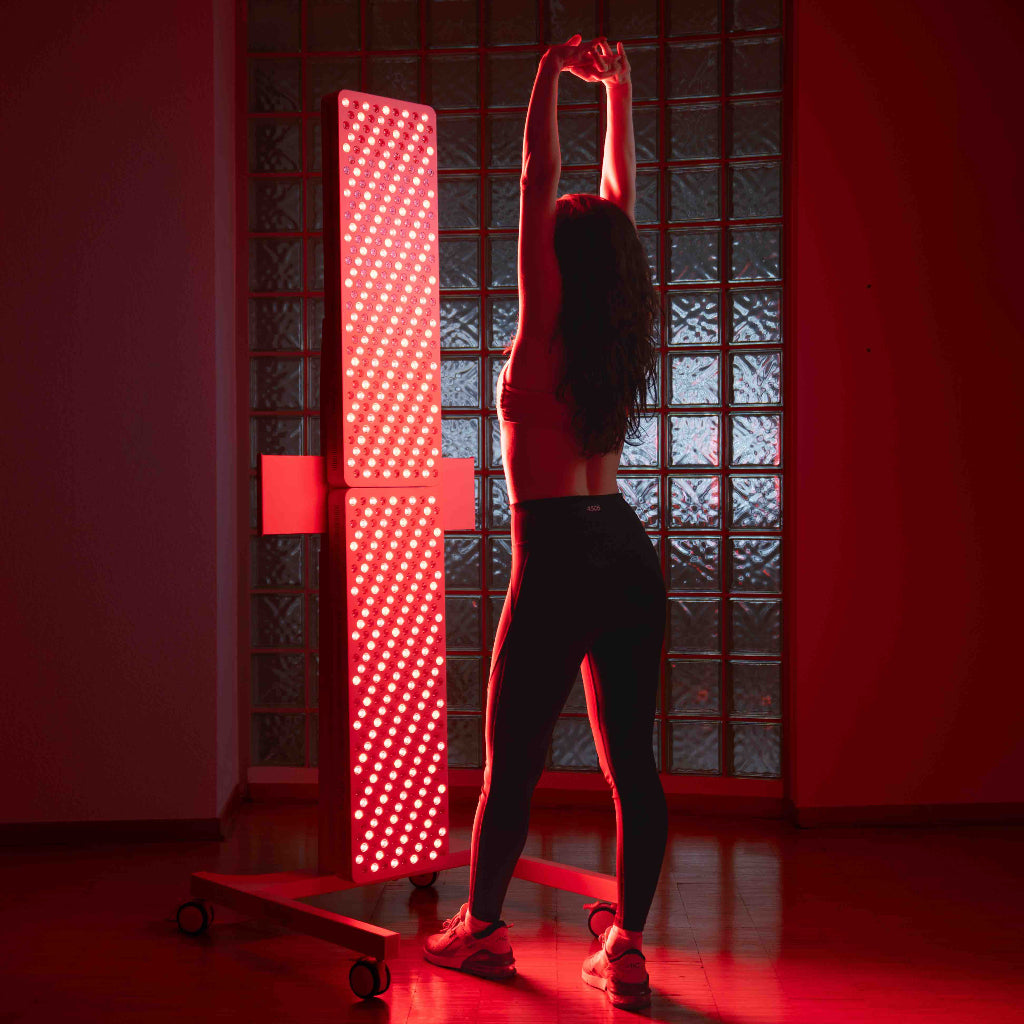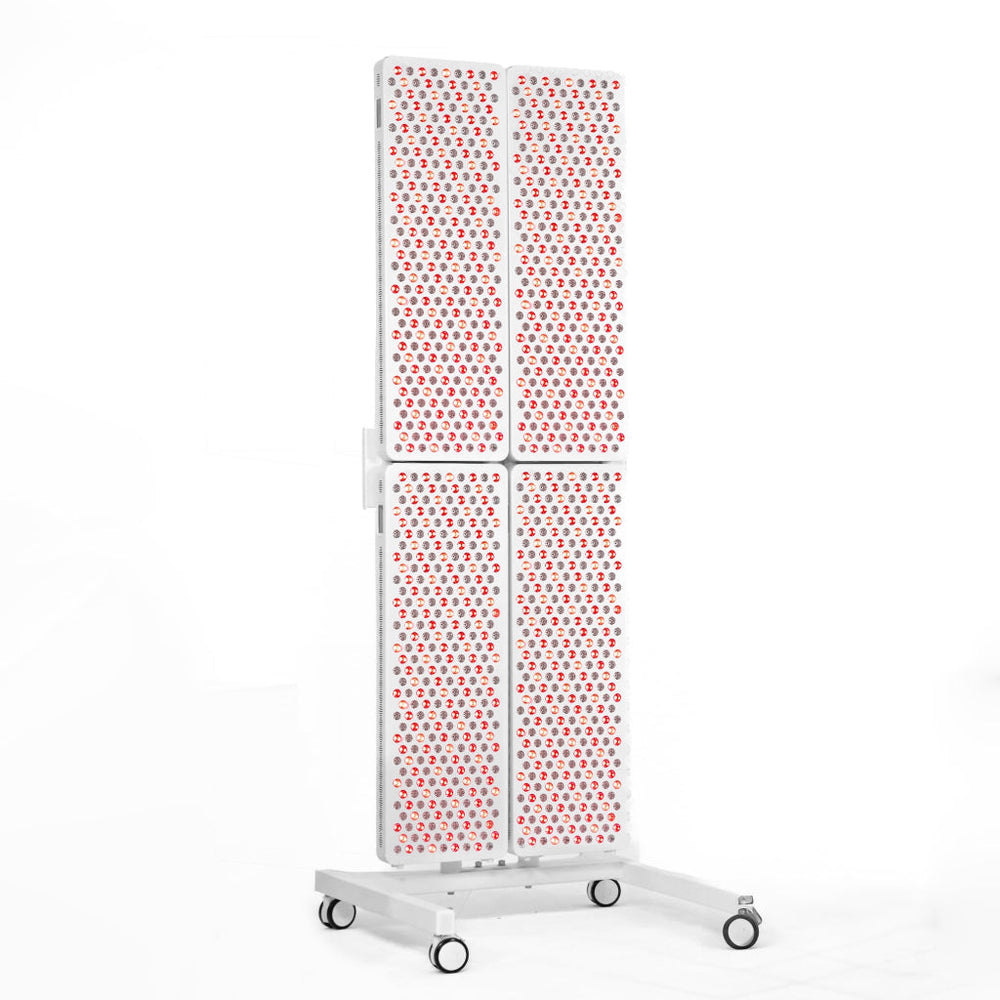Wie funktioniert
Rotlichttherapie?
Rotlichttherapie?
as we also absorb it through our skin cells, especially the light that penetrates deeper - such as red light and infrared. Countless studies show that red and near-infrared light stimulate mitochondria (our cellular power plants) to increase ATP production (our main cellular energy source). Here are some examples of this.
If you look at our food chain, it becomes clear that light is the primary source of energy for humans. In 1980, Dr. Paul Webb in the “American Journal of Clinical Nutrition” states that approximately 23% of human energy comes not from food but from light, refuting the popular calorie theory.
Modern lighting technology and its costs have revolutionized the way we live. Statistics show that city dwellers spend 90% of their time indoors. Bright sunlight delivers over 100,000 lux, even a shady day under a blue sky still reaches 20,000 lux, and a cloudy midday at least 2,000 lux. The lighting in our living and working spaces, on the other hand, often only reaches 300 lux. With such low light exposure, it is not surprising that that we feel more energetic and happier on sunny beaches. Spending long periods of time indoors can increase the risk of chronic pain, fatigue, and skin and vision problems, especially for office workers and seniors.
The comparison between indoor and outdoor lighting shows two key differences:
A significantly higher proportion of short-wave blue light indoors, known for the “blue light danger”. Long-term exposure to this wavelength can cause eye damage and, with evening exposure, suppress melatonin levels, leading to sleep problems. (For solutions, visit our selection of products with blue light filter glasses) The "nutritive part" of red light and near-infrared, which is essential for cellular energy, is almost completely missing from LED lighting. LEDs produce light from semiconductors, while natural sunlight consists of combustion radiation and provides a continuous full spectrum. Energy-efficient artificial lighting cannot replace natural light.
through red light lamps Red light lamps, which offer red light between 630-670 nanometers and infrared between 810-880 nm, supplement the missing portion of the full light spectrum. Red light therapy, a form of photobiomodulation, has been proven to be an effective method for promoting overall well-being and treating various health problems. The wide range of possible applications, from improving athletic performance to skin rejuvenation, makes choosing the right device crucial. This blog post will help you choose a red light therapy device and explain the key factors.
Red Light (RED): Mainly absorbed by the skin, effective for skin treatments, collagen production and superficial healing processes.
Near-infrared light (NIR): Penetrates deeper into the body and positively affects muscles, joints and internal organs.
With our red light lamps you benefit from:
Biohacking allows everyone to improve their quality of life using cutting-edge technology. Many, from professional athletes to gyms to health clinics, already use red light therapy as an essential tool for improved well-being, better appearance and increased self-esteem.
A 20-minute daily session with a red light lamp can improve everyone's quality of life.
Consider the following guidelines to choose an effective red light bulb for your needs:
When using your red light lamp or infrared lamp with stand, we recommend a distance of approximately 15 - 50 cm per illuminated area for 10 - 20 minutes. The greater the distance from the body, the lower the infrared radiation and the longer the time required. However, a greater distance also increases the illuminated area. Find out more about "red light models", "red light", "red light lamp effect", "infrared light", "red light for how long", "light therapy", "red light therapy", and "red light effect".
Treatment with red light, for example with a red light lamp - for example a model from dm or an infrared lamp from Media Markt - can be carried out at any time of day. It is particularly popular in the morning, but can also be used effectively before or after training. It is worth finding out about the following topics: "Duration of use of a red light lamp", "Spectrum of light", "Recommended duration for red light applications", "Possible side effects of a red light lamp", "Infrared light lamps", "Effects of red light", "Effects on the eyes by red light", "infrared wavelengths" and "uses and advantages of red light".
It is possible to use a red light or infrared lamp, such as the models from Rossmann or dm, several times a day. However, for repeated treatment of the same area of the body, we recommend a maximum daily dose of 30 minutes, spread over two to three applications.
Red light therapy is also useful in summer, for example for relieving muscle tension after outdoor activities or for skin regeneration after sun exposure. It helps to soothe sun-related skin irritations and supports the healing of minor sunburns. It also promotes blood circulation and contributes to faster muscle recovery, resulting in improved well-being in the summer months.
Red light therapy has a wide range of applications in health and beauty care as it has a wide range of positive effects on the body. Here are some of the main uses: Pain relief: Red light therapy can help relieve chronic pain, especially muscle and joint pain, arthritis and back pain. Skin regeneration and care: It promotes the healing of skin injuries, reduces wrinkles, scars, acne and other skin imperfections by stimulating collagen production. Promotes wound healing: The therapy accelerates the healing process of wounds and reduces the risk of infections. Anti-inflammatory: Red light therapy is used to reduce inflammation and relieve symptoms of skin conditions such as psoriasis and eczema. Improve blood circulation: Application can improve blood circulation, resulting in faster recovery of muscles and tissues. Hair Growth Support: It can also be used to stimulate hair growth in those suffering from hair loss by increasing blood flow to the scalp and stimulating hair follicles. Mood improvement and sleep improvement: By influencing hormone production, red light therapy can help improve mood and regulate sleep cycles. Sports Recovery Support: It helps in rapid recovery from muscle fatigue and injuries, making it particularly popular among athletes. Reduction of cellulite: The improved blood circulation and fat metabolism stimulation through red light can help reduce cellulite. These versatile applications make red light therapy a popular choice for both therapeutic and cosmetic purposes.
We often lack the time or suitable space to spend enough hours unclothed in the sun - especially during the week. The use of red light therapy, for example using one of our red light lamps, offers an efficient and practical solution for use at home. This method serves as an intense source of beneficial light waves that are absorbed by the body in a short duration.
In photobiomodulation, a phenomenon known as “biphasic dose response” occurs. This means that a too low dose of light does not achieve the desired effect, an optimal dose achieves the maximum effect, while an excessively high dose negates the positive effects. It is therefore important to adhere to our application recommendations: Maintain a distance of around 15 to 50 cm from the illuminated area and use the therapy for 10 to 20 minutes.
While using red light therapy, you should always keep your eyes closed to ensure a positive effect on your eyes and vision, as the light can also penetrate through closed eyelids. However, some people are more sensitive to intense light and find it uncomfortable even with their eyes closed. For this reason we provide safety glasses. It is advisable to speak to your doctor about the need to wear safety glasses.
Yes, you can also use red light therapy in the evening. Many users find the therapy in the evening particularly relaxing and helpful in preparing for a restful night. Red light therapy can help support the production of melatonin, the sleep hormone, and therefore improve sleep quality. However, it is advisable not to use the therapy immediately before bedtime as light exposure could affect your natural sleep rhythm. A time about 1 to 2 hours before bedtime is ideal to reap the positive effects without disturbing your sleep.
Some people are more sensitive to intense light and find the use of red light therapy disturbing, even with their eyes closed. That's why we provide safety glasses. These goggles can also be useful in the evening when using phototherapy.
The red (RED) light spectrum is absorbed superficially, primarily by skin and hair, making it particularly effective in promoting a healthy and youthful appearance. In contrast, the near-infrared (NIR) spectrum can penetrate deep into the subcutaneous tissue, up to several centimeters deep. It affects different body structures such as organs, joints, muscles, tendons, ligaments and even the brain.
The combination of red (RED) and near-infrared (NIR) light spectrum is often used because they work synergistically and thus increase the effectiveness of the therapy. However, it is possible to use each spectrum individually. The invisible NIR spectrum is particularly recommended for therapy sessions in the evening, as it has no stimulating effect on the body and therefore does not affect sleep.
RUsing red light can be beneficial when you have a cold. Using a red light lamp supports blood circulation, which can have a positive effect on the healing process. In addition, the heat emitted by the red light lamp helps to expand the sinuses and thus reduce cold symptoms. Red light is therefore a useful addition to relieving cold symptoms. Experience relief from your cold with our high-quality red light lamps. Discover our selection now on WeCare+ .
Using a red light lamp can provide an effective way to relieve ear pain. The heat generated by the lamp can help reduce pain and promote blood circulation in the affected area. Reduce your ear pain naturally. Take a look at our selection of red light bulbs on WeCare+ and find your solution.
YYes, using a red light lamp can be effective in treating a cold. It helps open blocked nasal passages and thereby makes breathing easier. Improve your breathing and clear your nasal passages with red light therapy. Browse our selection of red light bulbs on WeCare+ .
A red light lamp offers a variety of health benefits. It can help promote blood circulation, relieve pain and help heal a wide range of ailments. Discover the extensive health benefits that a red light lamp has to offer. Visit WeCare+ to find the perfect model!
Yes, red light therapy can be effective in relieving coughs by opening the airways and making breathing easier. The heat emitted by a red light lamp can also have a calming effect on the mucous membranes. Make your breathing easier and alleviate coughing problems with red light. Discover the right red light lamp for your needs on WeCare+ .
Red light therapy is particularly effective in treating sinus infections. The heat produced by a red light lamp helps to relieve sinus pressure and reduce pain and pressure. Experience relief from sinus infections with the soothing effects of red light. Find effective red light lamps for your needs. WeCare+ .
Red light therapy provides valuable assistance in treating cold symptoms by helping to relieve symptoms such as nasal congestion and sinus pressure. Promote your recovery from colds by using a red light lamp. Discover the best option for your needs now. WeCare+ .
Yes, red light therapy can have a supportive effect on bronchitis. Using a red light lamp can help relieve symptoms such as coughing and difficulty breathing. Improve your well-being and make breathing easier with bronchitis. Explore our selection of red light bulbs. WeCare+ and breathe a sigh of relief.
Red light therapy can be beneficial for middle ear infections by improving blood circulation and thereby helping to relieve pain. The use of a red light lamp can be particularly effective in such cases. Experience relief from middle ear infections with our variety of red light lamps. Discover our selection. WeCare+ for effective solutions.
Red light therapy has been proven to be an effective method to improve overall well-being and performance. It is ideal as an addition to your daily routine or as part of your biohacking strategy. MITO LIGHT® provides you with the natural energy source of life and supports you on your path to better health and vitality.
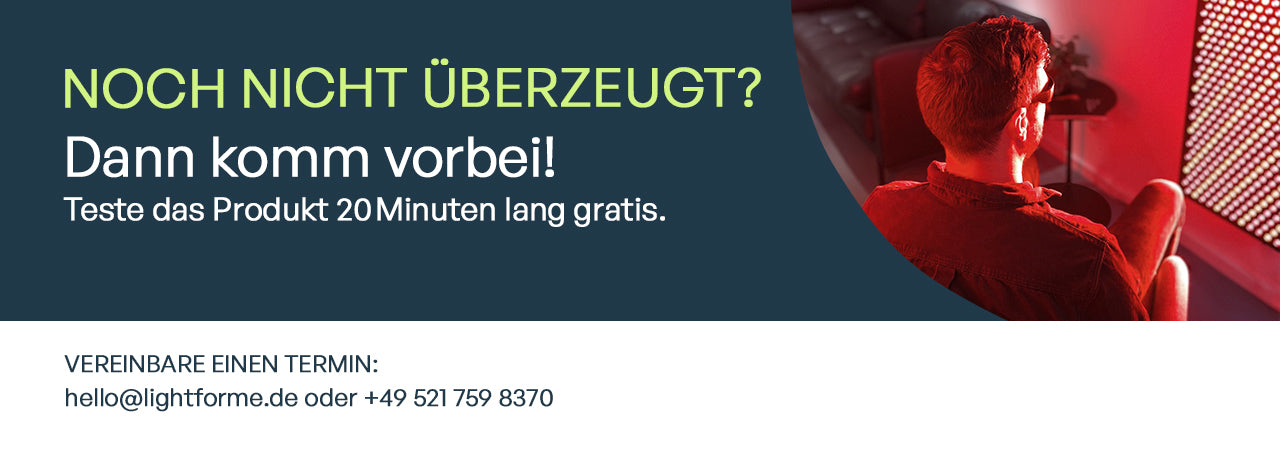
WeCare+ GmbH
Detmolder Str. 596-598
33699 Bielefeld
Öffnungszeiten:
Mo-Fr: 08:00-12:00 | 13:00-17:00







